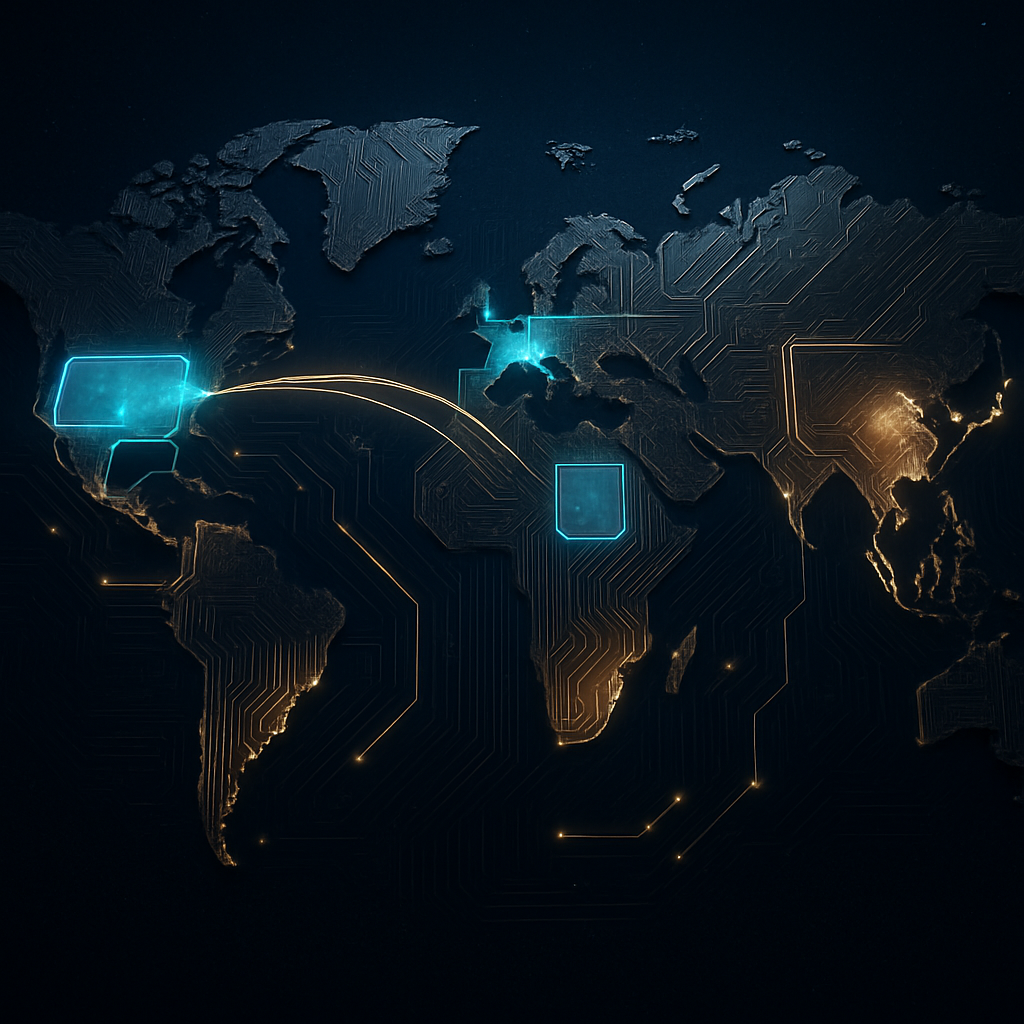Week 40: How AI Shapes Our Safety, Health, and Future Growth
Welcome to the Gedankenfabrik AI weekly update. This week, the AI landscape was shaped by breakthrough defensive strategies against cyber threats in global chip supply chains, transformative deployments in healthcare from echocardiography to pediatric cancer research, and both the promise and peril of powerful generative tools—from accelerating global developer productivity to a troubling surge in deepfake disinformation. The stakes for trust, health, and efficiency have never been higher, and this week’s stories provide both inspiration and critical reminders for business and technology leaders.
AI Fortifies Global Chip Supply Chains Against Supertargeted Cyber Threats
AI has taken center stage in defending the world’s semiconductor supply chains, which have become prime targets for increasingly sophisticated cyberattacks. With a 40% rise in supply chain breaches since 2023, adversaries now leverage AI to scour for vulnerabilities and craft elusive malware, sometimes even embedding threats into critical firmware updates. In a high-profile case, a logistics platform compromise disrupted retailers worldwide—a sign of how digital supply chain risks can create ripple effects across industries. But it’s not a one-sided battle: leading chipmakers are countering with their own AI arsenals. Techniques such as real-time anomaly detection and AI-driven risk mapping now flag previously invisible threats and enable rapid isolation of affected systems. This dynamic is reminiscent of a high-stakes chess match—AI moves, defenders counter-move—underscoring that, for the digital backbone of the global economy, only continuous investment in intelligent, automated defense will tilt the balance toward resilience.
Echocardiography: AI Speeds, Standardizes, and Democratizes Heart Care
AI is profoundly reshaping echocardiography and cardiovascular care, with machine learning models now matching or surpassing human experts in accuracy and speed. Automated analysis of heart function, sophisticated pattern recognition, and risk prediction are shrinking diagnostic turnaround from hours to minutes—making high-quality cardiac diagnostics available even in resource-strapped regions.
A standout example: An AI tool co-developed by Mayo Clinic identifies cardiac amyloidosis with over 90% accuracy from a single image clip, enabling intervention before irreversible heart damage. Echoing the early impact of calculators in accounting, AI-driven echocardiography promises not just to supplement but to elevate clinical practice—improving outcomes, lowering costs, and expanding care access across geography and expertise levels.
US Government Accelerates AI-Driven Pediatric Cancer Research
The US Department of Health and Human Services has doubled funding for AI-powered childhood cancer research, now allocating $100 million annually to the National Cancer Institute’s data initiative. This investment, underpinned by a 2025 executive order, aims to leapfrog progress by harnessing AI’s capacity to analyze vast, complex health data including electronic records, genetics, and medical imagery. This approach unlocks new possibilities: faster biomarker discovery, more precise treatment targeting, and improved prevention strategies—all while maintaining family control over data privacy.
The strategy positions AI not as a siloed research tool, but as the connective tissue that unites data, researchers, and clinicians behind a common goal—making meaningful inroads against the leading cause of disease-related death among US children.
Deepfake Videos: AI-Generated Disinformation Targets European Cities
While AI can heal and protect, it can also harm. This week saw an alarming surge in racist, xenophobic deepfake videos targeting European cities, generated with advanced tools like Google’s Veo 3. Designed to inflame anti-immigrant sentiment and fuel social discord, some of these viral clips rack up millions of views in days, outstripping the ability of platforms like TikTok or existing regulations to respond in time. What’s different is the sophistication and intentional blurring of fiction and reality—not to convince, but to provoke and manipulate. If you think of the information landscape as a reservoir, these deepfakes act as upstream contaminants, spreading far downstream before anyone can build a filter. The episode underscores the need for proactive regulation, real-time detection, and strong digital literacy to safeguard social trust.
New Wave of AI Developer Agents Sets a Benchmark for Productivity
San Francisco’s Factory raised $50 million to expand “Droids,” a new generation of AI developer agents that can be integrated across any coding environment—Terminal, Slack, web, or more—liberating engineers from platform lock-in. Unlike typical AI autocompletion assistants, these agents can autonomously handle migration, refactoring, documentation, and incident response, with some enterprise users reporting order-of-magnitude gains: up to 31x faster feature delivery and sweeping reductions in on-call fire-drills. This shift from augmentation to delegation may herald a leap on par with the move from mainframe to cloud. A useful analogy: where classic tools are like power tools for the artisan, agent-native Droids are more like skilled subcontractors—broadening what teams can build, faster and with fewer bottlenecks. The success of this model may define the next era of enterprise software engineering.
This week’s developments show AI’s impact is radiating in all directions:
as protectors (in chip supply chains and hospitals),
as accelerators (in software engineering and medical diagnostics),
as destabilizers (in the hands of those spreading digital misinformation)
Businesses and policymakers should prioritize investments in skilled AI teams, demand accountability from platform providers, and anchor innovation in trust and resilience.
Ultimately, the most competitive advantage may come not just from having the best technology, but from mastering the orchestration between AI’s creative, protective, and ethical dimensions.
Let´s keep watching how these frontiers come together, because this week’s stories show that real leadership in the age of AI means thinking as openly and broadly as the technology itself.
Until next week





